ADDICTION
ALCOHOL DEPENDENCE
QUIT SMOKING
ALLERGY
ANTI FUNGAL
FUNGAL INFECTION
FUNGAL NAIL INFECTIONS
ANTI-REJECTION DRUGS
ANTI WORM
ANTIBIOTIC
BACTERIAL INFECTIONS
ARTHRITIS
GOUT
OSTEOARTHRITIS
RHEUMATOID ARTHRITIS
BLOOD
LOW PLATELET COUNT
THROMBOPHLEBITIS
VARICOSE VEINS
COLON
ANAL FISSURE
PILES
ULCERATIVE COLITIS
DIABETES CARE
DIABETES INSIPIDUS
DIABETES TYPE
DIABETIC FOOT ULCERS
GLUCOSE MONITOR
EYES/EAR CARE
DRY EYES
EYE CARE
EYE EXAMINATION
EYE INFECTION
EYE LASHES
EYE PAIN
GLAUCOMA
OCULAR HYPERTENSION
UVEITIS
FEVER CARE
MALARIA
RHEUMATIC FEVER
TYPHOID FEVER
GASTROINTESTINAL
ACIDITY
CONSTIPATION
CROHN'S DISEASE
DIARRHOEA
GALLBLADDER STONES
INTESTINAL ULCERS
IRRITABLE BOWEL SYNDROME
MOTION SICKNESS
NAUSEA
Zole Ointment (Miconazole)
| Active Ingredient (Generic Name): | Miconazole |
|---|---|
| Indication: | Fungal skin infections |
| Manufacturer: | Sun Pharmaceutical Industries Ltd |
| Packaging: | 15 gm in one tube |
| Strength: | 0.02 |
From: $31.00
Zole Ointment, containing miconazole, is a topical antifungal medication used for treating fungal infections of the skin, hair, and nails. It relieves symptoms like itching, burning, cracking, and scaling, with noticeable improvements typically seen within a few days to a week. Miconazole inhibits ergosterol production, leading to fungal cell death. It is effective against ringworm, athlete’s foot, and Candida infections, while also reducing inflammation and preventing recurrence. Would you like more information on using Zole Ointment, its benefits, and potential side effects?
Main Points
- Zole Ointment (Miconazole) is effective in treating fungal infections on the skin, hair, and nails, relieving symptoms such as itching, burning, and cracking.
- Apply a thin layer of the ointment twice daily to the affected area, ensuring to wash hands before and after application to prevent spreading the infection.
- The ointment works by blocking ergosterol production in fungal cell membranes, disrupting their structure and causing fungal cell death.
- Common side effects may include burning, itching, or stinging at the application site, with possible skin irritation and dryness after prolonged use.
- It is important to complete the full treatment course as prescribed, even if symptoms improve, to fully eliminate the fungal infection.
What Is Zole Ointment Used For?
Zole ointment is primarily indicated for treating fungal infections affecting the skin, hair, and nails like athlete’s foot, jock itch, and ringworm. It can alleviate symptoms such as itching, burning, cracking, or scaling caused by fungal infections. When prescribed for skin, hair, or nail fungal infections, Zole ointment should be applied directly to the affected area twice daily, in the morning and evening. Proper hand hygiene before and after application is crucial. Adhering to the doctor’s instructions or the product label is essential to avoid ineffective treatment or potential allergic reactions.
Improvements in symptoms may be noticed within a few days to a week of using Zole ointment. Completing the full treatment course is important, even if symptoms disappear prematurely, to ensure complete eradication of the infection and reduce the risk of recurrence.
How Does Miconazole Work?
Miconazole, found in Zole ointment, hinders ergosterol production, a vital component of fungal cell membranes, disrupting fungal cell growth and replication. This action effectively treats fungal infections like athlete’s foot, ringworm, and jock itch by:
- Blocking ergosterol synthesis, preventing fungal cell membrane formation.
- Causing fungal cell membranes to become permeable, leading to cell death.
- Slowing fungal cell growth by disrupting membranes and ergosterol synthesis.
- Possibly enhancing the body’s immune response against fungal infections.
Conditions Treated by Zole
When using Zole ointment, you are targeting specific fungal or skin infections by inhibiting fungal growth and relieving associated symptoms. Zole is intended to treat various fungal infections and skin conditions effectively.
Fungal Infections Treated
Fungal infections such as ringworm, athlete’s foot, and jock itch are commonly treated with Zole ointment. This topical cream is effective against a variety of fungal infections, including ringworm, athlete’s foot, jock itch, and Candida infections caused by Candida yeast. Zole ointment is typically prescribed to treat fungal infections affecting the skin, hair, and nails.
Skin Infection Treatment
Zole ointment is an effective treatment for various skin infections, including skin fold infections, diaper rash, and intertrigo. These infections can cause discomfort and pain, but Zole ointment, containing miconazole as the active ingredient, helps combat fungal infections, reduce inflammation, and promote healing. By applying this antifungal ointment topically to the affected areas, you can expect fast and reliable relief. Trust Zole ointment to treat a range of skin infections and promote healthy skin.
Benefits of Using Zole Ointment
Using Zole ointment offers fast relief from itching, redness, and inflammation linked to fungal infections, helping to restore skin health. By following the application instructions, you can expect the following benefits:
- Quick symptom relief: Zole ointment promptly reduces itching, redness, and inflammation for immediate relief.
- Effective antifungal treatment: The active ingredient Miconazole in Zole ointment effectively fights fungal infections, promoting skin health and preventing recurrence.
- Simple application: Zole ointment is easy to apply and fits seamlessly into your daily skincare routine.
- Skin-friendly formula: Zole ointment is gentle on the skin, minimizing the risk of irritation, making it suitable for sensitive skin.
Side Effects of Miconazole
When using Zole ointment, it’s important to note that miconazole may lead to side effects. You might experience sensations like burning, itching, or stinging at the application site. Additionally, there is a possibility of skin irritation, presenting as redness, swelling, or blistering.
Common Reactions
Miconazole, the active ingredient in Zole Ointment, may cause common reactions such as skin irritation, itching, and burning sensations at the application site. These reactions are typically mild and temporary. Common reactions may include:
- Redness: Skin may appear red or inflamed at the application site.
- Itching: You may experience itching at the application site.
- Burning sensation: A burning or stinging sensation may occur, especially on open wounds or cuts.
- Dryness: The skin may become dry or flaky, particularly with prolonged use or sensitive skin.
It is important to follow the instructions carefully and consult a doctor if you experience severe or persistent reactions.
Skin Irritation Risks
If you have a history of allergic reactions or sensitive skin, you may face a higher risk of skin irritation when using miconazole. Watch out for signs of skin irritation like redness, itching, or burning sensations while using Zole ointment. Severe allergic reactions such as swelling, hives, or breathing difficulties can rarely occur.
| Symptom | Description | Action |
|---|---|---|
| Redness | Inflammation | Stop use, seek medical advice |
| Itching | Pruritus | Apply a topical cream, consult a doctor if needed |
| Burning sensation | Discomfort | Discontinue use, consult a doctor |
To reduce the risk of skin irritation, stick to the recommended dosage and avoid applying miconazole to broken or sensitive skin. If any unusual symptoms arise, stop using the ointment and consult a healthcare professional. Always follow the instructions on the product label for safe and effective use of Zole ointment.
Precautions Before Using Zole
Before applying Zole ointment, it’s essential to assess your medical history, particularly if you’ve had allergic reactions to similar antifungal treatments or have underlying skin conditions. Prioritize evaluating your overall health to ensure the safe and effective use of this medication.
Precautions to consider include:
- Pregnancy and breastfeeding: Notify your healthcare provider if you are pregnant, planning pregnancy, or breastfeeding to discuss potential risks and benefits of using Zole ointment.
- Allergic reactions: Consult your doctor if you have a history of allergic reactions to similar antifungal treatments before using Zole ointment.
- Skin conditions: Avoid applying Zole ointment on open wounds, cuts, or damaged skin to prevent adverse reactions or further irritation.
- Interactions with other medications: Disclose all medications, supplements, or vitamins you are taking to your doctor as Zole ointment may interact with certain medications. This information is crucial to avoid potential interactions.
How to Apply Zole Ointment
To apply Zole Ointment, begin by preparing the affected area to ensure it is clean. Then, apply a thin layer of the ointment, being careful not to apply too much. Make sure to avoid contact with your eyes, as the ointment is intended for external use only.
Clean the Affected Area
Rinse the affected area with mild soap and lukewarm water to eliminate any dirt, oil, or bacteria that could hinder the ointment’s effectiveness. It is crucial to ensure proper skin penetration and optimal ointment performance.
Before applying Zole ointment, follow these steps:
- Gently pat the area dry to avoid skin irritation.
- Clear away any crust or scales from the affected area to allow the ointment to reach the skin underneath.
- Refrain from using harsh cleansers that may aggravate the skin.
- Thoroughly dry the area to prevent dilution of the ointment’s effectiveness.
Apply a Thin Layer
Apply a thin layer of Zole ointment evenly to the affected area for maximum absorption and minimal wastage. Ensure the active ingredients penetrate the skin deeply for effective treatment of fungal infections. Gently rub the ointment until fully absorbed, covering the entire affected area. Avoid over-application to prevent greasiness and reduce effectiveness.
Consistently apply the ointment as directed to achieve optimal results and prevent infection spread. Consult your doctor or pharmacist for guidance on proper application if needed. Remember to wash your hands thoroughly after application to prevent spreading the infection. Following these steps will help effectively treat fungal infections with Zole ointment.
Avoid Eye Contact
To prevent accidental exposure, it is important to avoid getting Zole ointment in your eyes. This ointment is intended for topical use only and may cause irritation if it comes into contact with your eyes. Follow these steps to minimize the risk:
- Wash your hands before and after applying Zole ointment.
- Apply the ointment in a well-lit area for better visibility.
- Avoid applying the ointment near your eyes or eyelids.
- If the ointment gets into your eyes, flush them with water immediately and seek medical help if needed.
Dosage and Administration
Applying Zole ointment properly is crucial for effectiveness and safety. Apply a thin layer of the ointment to the affected area twice daily, in the morning and evening, or as instructed by your healthcare provider. Remember to wash your hands before and after application. For athlete’s foot, focus on the areas between toes. Treatment for skin fungal infections may last 2-4 weeks, while athlete’s foot treatment typically lasts 4-6 weeks. Finish the entire treatment course, even if symptoms improve. If you miss a dose, apply it when you remember without doubling up. If unsure, seek guidance from your doctor or pharmacist.
Interactions With Other Medicines
It is crucial to inform your healthcare provider about all medications you are taking because Zole ointment can interact with various medications, including prescription drugs, over-the-counter products, vitamins, and herbal supplements. These interactions can impact the effectiveness of Zole ointment or other medications and may increase the risk of adverse effects.
Some medications that may interact with Zole ointment are:
- Anticoagulants like Warfarin, which may increase the risk of bleeding when used concomitantly with Zole ointment.
- Antidiabetic medications such as metformin or sulfonylureas, which may lead to a higher risk of hypoglycemia when combined with Zole ointment.
- Corticosteroids, the combination of which with Zole ointment may increase the risk of adrenal insufficiency.
- Immunosuppressants like cyclosporine and tacrolimus, which may have reduced efficacy when used with Zole ointment.
To ensure the safety and effectiveness of your treatment with Zole ointment, make sure to disclose all your current medications to your healthcare provider.
Common Zole Ointment Questions
You may have questions about Zole ointment, such as how long it takes to see results. Typically, improvements in fungal infections can be seen within 2-4 weeks of using Zole ointment. To apply the ointment correctly, wash and dry the affected area before applying a thin layer 2-3 times a day. Zole ointment is safe for children under a doctor’s guidance. Common side effects may include redness, itching, or stinging at the application site. If these symptoms persist, consult your doctor. While Zole ointment generally has no major interactions with other medications, it’s important to inform your doctor about all medications you’re taking for safe co-administration.
Zole Ointment Vs. Other Treatments
When considering treatment options for fungal infections, it’s important to compare Zole ointment with other available choices. To help you make an informed decision, here are some alternatives to Zole ointment:
- Clotrimazole cream: This antifungal cream is commonly used for conditions like athlete’s foot and ringworm. It can be purchased over-the-counter and works similarly to Zole ointment.
- Terbinafine cream: This prescription topical antifungal is effective against athlete’s foot and jock itch, with a quicker onset of action than Zole ointment.
- Itraconazole oral medication: Prescribed for systemic fungal infections, this oral antifungal has a broader spectrum of activity compared to Zole ointment.
- Home remedies: Some individuals opt for natural remedies such as tea tree oil, coconut oil, or aloe vera. While these may offer relief, it’s advisable to consult a healthcare professional before relying solely on home remedies.
Preventing Fungal Infections
Taking proactive measures to prevent fungal infections is crucial, as treating them can be challenging and they may recur if not managed effectively. To reduce the risk of developing fungal infections, it is important to keep your skin clean and dry, especially in areas prone to moisture like between your toes.
| Prevention Measure | Importance | Tips |
|---|---|---|
| Wear well-ventilated shoes | Prevents moisture accumulation | Choose breathable shoe materials |
| Keep skin folds clean and dry | Reduces fungal growth | Use antifungal powder or spray |
| Avoid sharing personal items | Prevents cross-contamination | Use your own towels, clothes, and toiletries |
| Wear loose, breathable clothing | Reduces moisture buildup | Avoid tight clothing, especially in warm weather |
When to See a Doctor
Recognize warning signs of a fungal infection like intense itching, burning, or skin cracking. Seek medical help if these symptoms persist or worsen. Here are instances where you should consult a doctor:
- Severe symptoms: Symptoms are severe, widespread, or accompanied by fever, pus, or increased light sensitivity.
- No improvement: Symptoms don’t improve after 2-3 weeks of self-care or over-the-counter treatments.
- Skin infection: Signs of skin infection like increased redness, swelling, or pus appear.
- Underlying conditions: If you have a weakened immune system or medical conditions such as diabetes.
Frequently Asked Questions
Can I Use Zole Ointment on My Face or Sensitive Areas?
When dealing with skin issues, it is important to be cautious when considering the application of a topical ointment on your face or sensitive areas. Prior to using any medication, carefully review the product label and seek guidance from a healthcare professional or pharmacist. This is especially crucial if you have a history of skin allergies or sensitivities.
Is Zole Ointment Safe to Use During Pregnancy or Breastfeeding?
When considering pregnancy or breastfeeding, caution is advised when using topical creams. It is generally recommended to avoid strong antifungals during these periods. Miconazole, the active ingredient in Zole Ointment, is classified as category B by the FDA, indicating moderate safety for use during pregnancy and breastfeeding. It is advisable to consult your healthcare provider before using Zole Ointment to ensure its suitability for your specific situation.
Can I Use Zole Ointment on Open Wounds or Broken Skin?
When dealing with open wounds or broken skin, caution is advised before applying any topical treatments. It is generally not recommended to use ointments on open wounds as they may impede the healing process or lead to infections. However, if there is a fungal infection on broken skin, Zole Ointment can be used under medical supervision. Ensure the wound is cleaned and dressed properly before applying the ointment, and strictly adhere to the doctor’s instructions.
How Long Does It Take to See Results From Using Zole Ointment?
When treating fungal infections, results from using Zole ointment typically become noticeable within 2-4 weeks. The timeframe may vary based on the infection’s severity and consistent application of the ointment. Adhering to the product’s instructions and medical advice is crucial. Expect gradual progress with regular use of the ointment.
Can I Use Zole Ointment on Children or Infants?
When treating fungal infections in children, it is important to proceed with caution. Avoid using antifungal creams on infants under six months old unless specifically instructed by a pediatrician. For children over six months, antifungal creams can be used following the product’s guidelines, but it is advisable to seek medical advice if unsure. Zole Ointment is suitable for children aged two and above; however, consulting a doctor before applying it to children is recommended.
Conclusion
Zole Ointment contains miconazole, an effective topical antifungal treatment for athlete’s foot, ringworm, and yeast infections. Understanding miconazole’s mechanism of action and benefits helps in confidently using Zole ointment for fungal infection treatment. It is important to be aware of potential side effects and to take precautions to prevent reinfection. Consult a doctor if symptoms persist for further guidance.


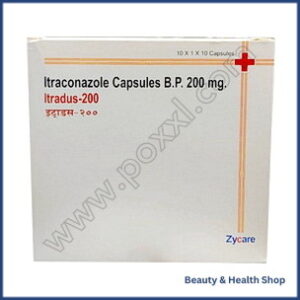
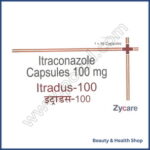
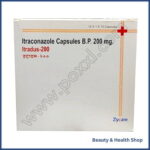
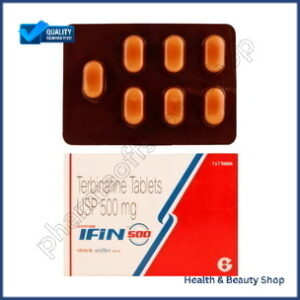
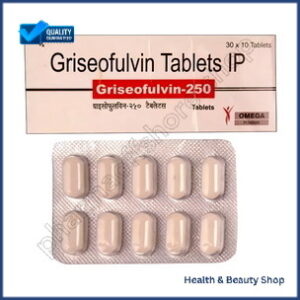
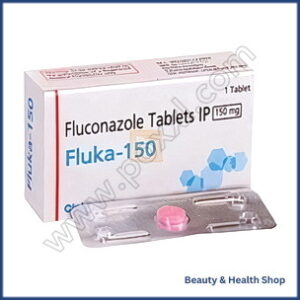
There are no reviews yet.